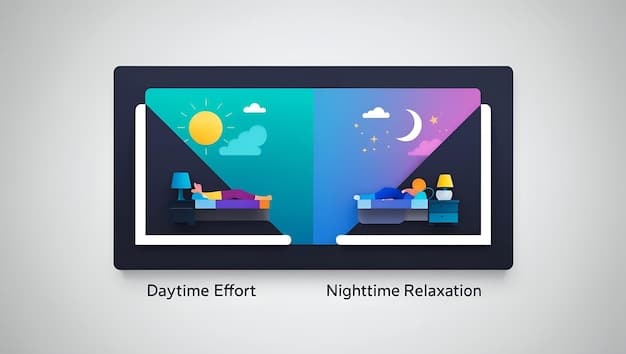The Impact of AI Upscaling: DLSS 3.5 vs FSR 3 for Gaming

The Impact of AI Upscaling on Gaming Performance: A Comparison of DLSS 3.5 and FSR 3 reveals how these technologies enhance frame rates and visual fidelity, impacting the gaming experience. This analysis examines their strengths, weaknesses, and suitability for different hardware configurations.
AI upscaling technologies have revolutionized gaming, offering gamers the opportunity to experience higher resolutions and smoother frame rates without necessarily requiring top-of-the-line hardware. Among the leading contenders in this space are NVIDIA’s Deep Learning Super Sampling (DLSS) and AMD’s FidelityFX Super Resolution (FSR). With the release of DLSS 3.5 and FSR 3, the competition has intensified, prompting gamers to wonder about the impact of AI upscaling on gaming performance: a comparison of DLSS 3.5 and FSR 3.
This article examines these technologies, their underlying mechanisms, and their impact on gaming performance, offering a detailed comparison to help you make an informed decision.
Understanding AI Upscaling in Gaming
AI upscaling is a technique used to increase the resolution of a game or video without significantly impacting performance. It achieves this by rendering the game at a lower resolution and then using artificial intelligence to intelligently upscale it to a higher resolution. This allows gamers with less powerful hardware to experience games at higher resolutions and with better visual fidelity.
How AI Upscaling Works
AI upscaling technologies like DLSS and FSR use deep learning algorithms to analyze the lower-resolution image and predict the details that would be present in a higher-resolution image. This process involves training the AI model on a vast dataset of high-resolution images, allowing it to learn patterns and textures that are then applied to the upscaled image.
Benefits of AI Upscaling
- Increased frame rates: By rendering the game at a lower resolution, the GPU has less work to do, resulting in higher frame rates.
- Improved visual fidelity: AI upscaling can produce images that are sharper and more detailed than traditional upscaling methods.
- Wider compatibility: AI upscaling technologies are compatible with a wide range of hardware, making them accessible to more gamers.
In conclusion, AI upscaling offers a promising solution for gamers looking to improve both performance and visual quality. Technologies like DLSS and FSR leverage the power of artificial intelligence to deliver enhanced gaming experiences without demanding high-end hardware. As these technologies continue to evolve, they are set to become an integral part of the gaming landscape.
DLSS 3.5: Ray Reconstruction and Enhanced Image Quality
NVIDIA’s DLSS has been a game-changer since its introduction, and DLSS 3.5 takes it a step further with the introduction of Ray Reconstruction. This technology promises to improve image quality, especially in ray-traced games, making the impact of AI upscaling on gaming performance even more noticeable.
Ray Reconstruction Explained
Ray Reconstruction replaces traditional denoising techniques with an AI-based algorithm trained to recognize and reconstruct light patterns. This results in more accurate and stable ray-traced effects, reducing ghosting and flickering.
DLSS 3.5 Performance
While DLSS 3.5 primarily focuses on image quality, it also offers performance benefits. By improving the efficiency of ray tracing, it allows for higher frame rates or the ability to enable more demanding visual settings.

DLSS 3.5 Supported Hardware
DLSS 3.5 is supported on NVIDIA RTX GPUs, with the best results typically seen on newer generations like the RTX 40 series. Older RTX cards also benefit, but the extent of the improvement may vary.
In essence, DLSS 3.5 enhances visual fidelity in ray-traced games through Ray Reconstruction, improving the efficiency of ray tracing to provide better frame rates. This enhancement of the impact of AI upscaling on gaming performance makes modern gaming more immersive.
FSR 3: Fluid Motion Frames and Wider Compatibility
AMD’s FSR 3 is designed to compete directly with DLSS, offering similar upscaling and frame generation capabilities. FSR 3 aims to provide a performance boost across a wider range of hardware, making it a more accessible option for many gamers. Understanding the impact of AI upscaling on gaming performance with FSR 3 is crucial for gamers seeking alternatives.
Fluid Motion Frames
A key feature of FSR 3 is Fluid Motion Frames, which generates additional frames to increase perceived smoothness. This technology analyzes motion vectors to create intermediate frames, effectively doubling the frame rate in some scenarios.
FSR 3 Performance
FSR 3 promises significant performance gains, particularly in games that are GPU-bound. By generating frames, it can provide a smoother gaming experience even on less powerful hardware. The effectiveness of FSR 3 can vary depending on the game and hardware configuration.
FSR 3 Compatibility
Unlike DLSS, which is limited to NVIDIA RTX GPUs, FSR 3 is designed to work on a broader range of hardware, including AMD Radeon GPUs and even some older NVIDIA cards. This wider compatibility makes FSR 3 an appealing option for gamers who don’t have the latest hardware.
In summary, FSR 3 improves performance in gaming through Fluid Motion Frames, aimed to generate additional frames to increase perceived smoothness. Also, the appeal of FSR 3 lies in its wider compatibility with a larger range of hardware.
Comparing DLSS 3.5 and FSR 3: Key Differences
When comparing DLSS 3.5 and FSR 3, it’s important to consider several factors, including image quality, performance, and compatibility. Each technology has its strengths and weaknesses, making them suitable for different users.
Image Quality
DLSS 3.5’s Ray Reconstruction provides superior image quality in ray-traced games. The AI-based denoising produces cleaner and more stable visuals compared to traditional methods. FSR 3, while offering good image quality, may exhibit some artifacts or blurriness in certain scenarios.
Performance
Both DLSS 3.5 and FSR 3 offer performance gains, but the extent of the improvement can vary. DLSS 3.5 is optimized for NVIDIA RTX GPUs, while FSR 3 is designed to work across a wider range of hardware. Gamers should test both technologies on their specific hardware to determine which provides the best performance.
Compatibility
FSR 3 has a clear advantage in terms of compatibility, as it supports a broader range of GPUs. DLSS 3.5 is limited to NVIDIA RTX GPUs, which may be a limiting factor for some gamers.

Considering these differences, the impact of The Impact of AI Upscaling on Gaming Performance: A Comparison of DLSS 3.5 and FSR 3 depends on individual preferences, hardware capabilities, and game compatibility. It’s advisable to test both technologies to see which one works best on your specific setup.
Real-World Gaming Scenarios: Putting DLSS 3.5 and FSR 3 to the Test
To provide a more practical comparison, let’s consider how DLSS 3.5 and FSR 3 perform in real-world gaming scenarios. Testing these technologies across different games and hardware configurations can offer valuable insights into their strengths and weaknesses.
Scenario 1: AAA Title with Ray Tracing
In a demanding AAA title with ray tracing enabled, DLSS 3.5 is likely to offer superior image quality and performance on NVIDIA RTX GPUs. The Ray Reconstruction technology can significantly improve the visual fidelity of ray-traced effects, while also providing a performance boost.
Scenario 2: Competitive Esports Title
In competitive esports titles, where high frame rates are crucial, both DLSS 3.5 and FSR 3 can provide noticeable performance gains. However, the choice between the two may depend on personal preference and the specific game. Some gamers may prefer the slightly sharper image quality of DLSS 3.5, while others may prioritize the wider compatibility of FSR 3.
Scenario 3: Older Hardware
On older hardware, FSR 3 may be the more viable option, as it is designed to work across a broader range of GPUs. While DLSS 3.5 may offer some benefits on older RTX cards, the improvement may not be as significant as with FSR 3.
| Key Aspect | Brief Description |
|---|---|
| ✨ Image Quality | DLSS 3.5 excels with Ray Reconstruction, offering superior clarity. |
| 🚀 Performance Boost | Both technologies enhance frame rates, but gains vary by hardware. |
| 💻 Compatibility | FSR 3 supports a wider range of GPUs, making it more accessible. |
| 🎮 Gaming Scenario | Choice depends on game type & hardware, optimize your experience. |
Frequently Asked Questions
AI upscaling improves gaming performance by rendering games at a lower resolution and then using AI to upscale them, increasing frame rates without significant loss in visual quality.
DLSS 3.5 enhances image quality through Ray Reconstruction, an AI-based algorithm that replaces traditional denoising techniques, resulting in more accurate and stable ray-traced effects.
Fluid Motion Frames is a feature in FSR 3 that generates additional frames to increase perceived smoothness, effectively doubling the frame rate in some gaming scenarios utilizing the impact of AI upscaling on gaming performance.
Yes, FSR 3 is designed to work on a broader range of hardware, including AMD Radeon GPUs and some older NVIDIA cards, whereas NVIDIA’s DLSS is limited to NVIDIA RTX GPUs.
The choice depends on your hardware and the specific game. DLSS 3.5 may offer better image quality on RTX GPUs, while FSR 3 provides wider compatibility and performance gains on various GPUs.
Conclusion
In conclusion, both DLSS 3.5 and FSR 3 represent significant advancements in AI upscaling technology, offering gamers improved performance and visual fidelity. The impact of AI upscaling on gaming performance: a comparison of DLSS 3.5 and FSR 3 reveals that their suitability depends on individual hardware configurations and specific gaming scenarios.
Ultimately, gamers should experiment with both technologies to determine which provides the best balance of image quality and performance for their needs.





